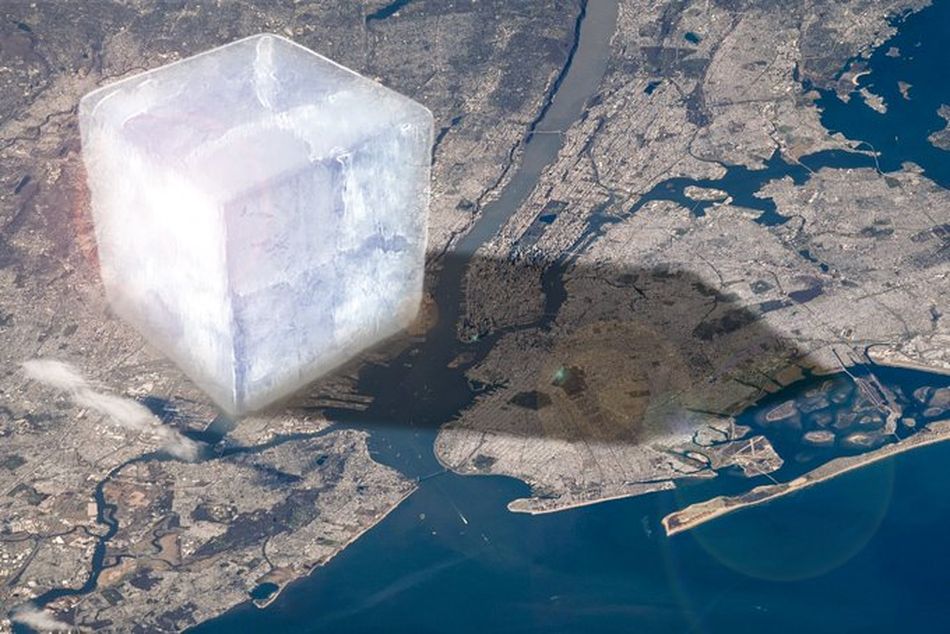On Earth, the amount of ice lost each year is equal to a monstrous, over six-mile-high ice cube looming over New York City.
And this ice loss is accelerating.
In research published Monday in the scientific journal The Cryosphere, earth scientists concluded the planet lost a prodigious 28 trillion tonnes of ice between 1994 and 2017. This means ice mass is melting away, like a shrinking glacier. Since the 1990s, annual ice loss has increased by 57 percent.
“Over the past three decades, ice has been lost from every corner of our planet,” said Andrew Shepherd, a professor of earth observation at the University of Leeds and a coauthor of the research.
Accelerating ice loss threatens to redraw maps all over the globe, because much of this ice — from Greenland, Antarctica, and other glaciers — flows or melts into the ocean. Already, sea levels have risen by some eight to nine inches since 1880. Yet if this current rate of ice loss acceleration is sustained, the planet’s sea levels could rise by another 27 to 31 inches (around 70 to 80 cm) by the century’s end, explained Bob Kopp, the director of the Institute of Earth, Ocean, and Atmospheric Sciences at Rutgers University. Kopp had no involvement with the study.
For much of the 20th century, sea levels rose annually by some 1.4 millimeters a year. But in recent years, that jumped to 3.6 millimeters. “It’s accelerating,” said Kopp.
To visualize the magnitude of ice loss over the past few decades, ice sheet researchers collaborated with the graphics company Planetary Visions to produce (to scale) an image of a massive ice cube plopped down next to New York City. That 10-kilometer (6.2-mile) block represents the average ice loss each year since the 1990s.

A rather large ice cube.
Image: Planetary Visions
Earth’s dramatic ice loss has largely been revealed by modern satellites. These satellites, some that zoom over the poles, document changes in harsh, inaccessible places, particularly Greenland and Antarctica. “It’s incredible to see how far we have come in a generation,” said Shepherd, noting the relatively few satellites in the early nineties.
Greenland and Antarctica — home to the two largest ice sheets on Earth — figure to be dominant contributors of sea level rise in the coming decades. In the past 30 years, ice loss in Greenland and Antarctica has already increased sixfold. These remote, ice-clad lands deeply concern earth scientists because they hold the potential for many feet of sea level rise.
“Ice has been lost from every corner of our planet.”
Greenland, for example, is now getting hit with warming both on land and in the oceans. Over the past couple decades, warmer air temperatures have melted ice on Greenland at an “off-the-charts” rate. Meanwhile, an ongoing NASA mission has revealed that the warming oceans play a dominant role in melting Greenland, too. In research also published Monday, this time in the journal Science Advances, scientists show that some of Greenland’s giant glaciers, which flow out to the sea in steep inlets, is where almost half of Greenland’s ice loss occurred between 1992 and 2017.
This group of deep glaciers (79 in all), including the colossal Jakobshavn glacier, can reach some 3,000 feet beneath the ocean surface. Here, relatively warmer waters eat away at the ice. Eventually, big chunks of the serpentine glaciers break off into the ocean, adding to sea level rise.
“There’s a small number of deep glaciers that are the big dogs,” explained NASA oceanographer Josh Willis, who leads missions to Greenland and is a coauthor on the new Greenland research. “They’re the most connected to the ocean.”
[embedded content]

Greenland’s ice sheet is rapidly melting.
Image: noaa / nasa / Maria-José Viñas
The oceans, which are now relentlessly heating, show no sign of slowing their impact on Greenland’s ice. That’s one reason why end-of-century sea level rise estimates (which in their best-case scenarios range from about one to two feet and in their worst scenarios range from some two feet to potentially over three feet) from the UN’s climate science agency, the Intergovernmental Panel on Climate Change, are sometimes viewed as conservative. Most sea level rise predictions, for example, don’t yet account for the ocean’s oversized impact on Greenland. Yet, there’s colossal amounts of ice left for the seas to melt. We could see massive, permanent flooding of coastlines.
“The big ice sheets can continue to accelerate [melting] for a long time,” said NASA’s Willis. “There’s a lot of ice there.”
Meanwhile, Earth is experiencing dramatic losses of sea ice, which plays a much smaller role in raising sea levels than melting glaciers do, but contributes to a heating planet. Today, Arctic sea ice is a shell of its former self: It’s been in sharp decline for 40 years. When bright, reflective sea ice melts, it leaves the dark oceans to absorb more sunlight, which then helps amplify more warming in the Arctic. It’s a vicious cycle.
See Also: Where to see the dying glaciers
The big picture is clear. Ice melt will almost certainly accelerate in many parts of the world unless humanity curbs Earth’s continued warming trend.
“It’s disappearing,” said Willis. “It’s happening faster and faster each decade.”
WATCH: NASA video showcases the Earth’s accelerating warming trends

